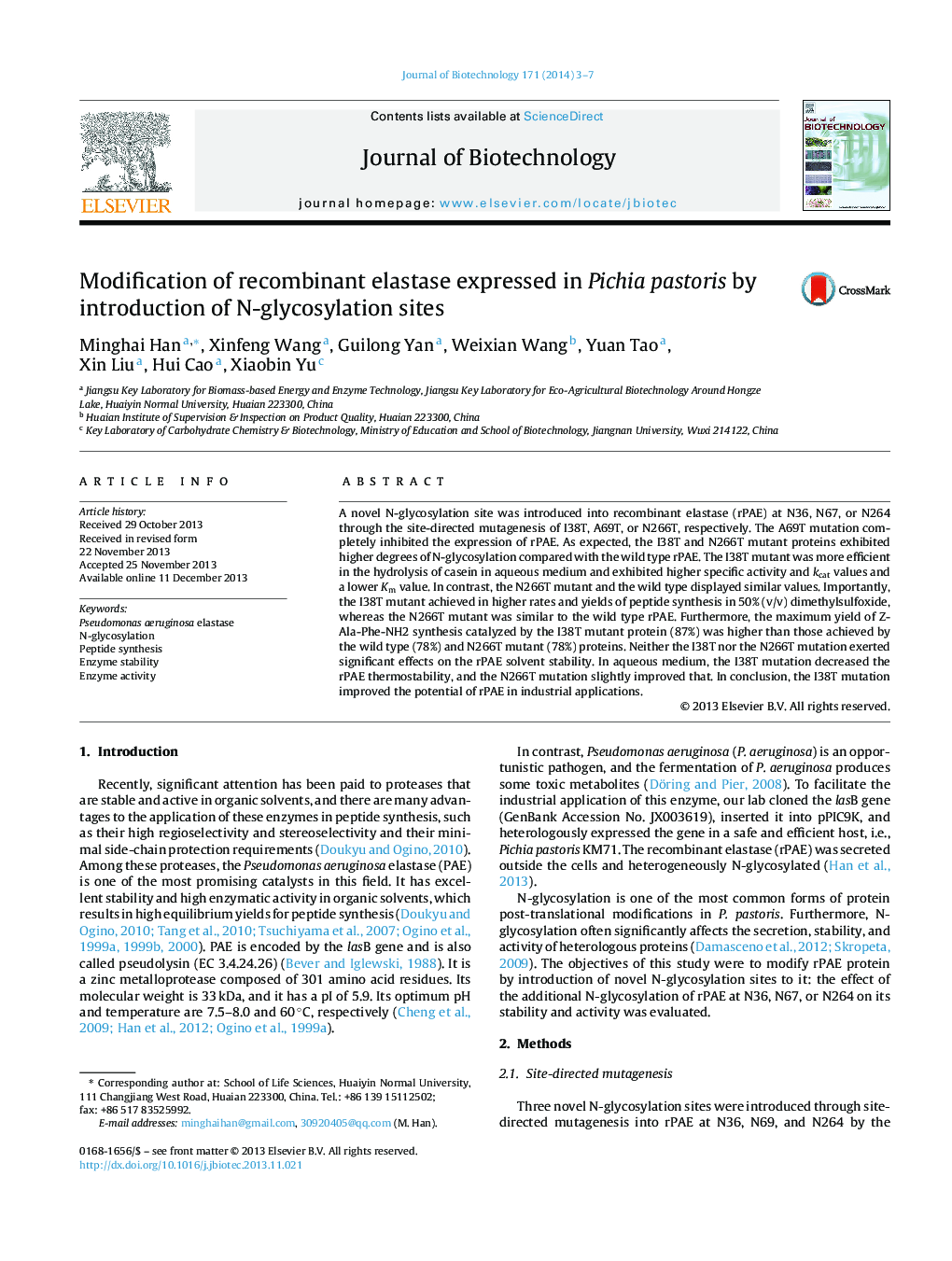| Article ID | Journal | Published Year | Pages | File Type |
|---|---|---|---|---|
| 23244 | Journal of Biotechnology | 2014 | 5 Pages |
•Introduction of an N-glycosylation site at N67 completely inhibited rPAE expression.•N-glycosylation at N36 enhanced rPAE catalytic activity in aqueous and organic solvents.•N-glycosylation at N264 exerted trivial effects on rPAE activity therein.•N-glycosylation at N36 or N264 affected rPAE solvent stability insignificantly.
A novel N-glycosylation site was introduced into recombinant elastase (rPAE) at N36, N67, or N264 through the site-directed mutagenesis of I38T, A69T, or N266T, respectively. The A69T mutation completely inhibited the expression of rPAE. As expected, the I38T and N266T mutant proteins exhibited higher degrees of N-glycosylation compared with the wild type rPAE. The I38T mutant was more efficient in the hydrolysis of casein in aqueous medium and exhibited higher specific activity and kcat values and a lower Km value. In contrast, the N266T mutant and the wild type displayed similar values. Importantly, the I38T mutant achieved in higher rates and yields of peptide synthesis in 50% (v/v) dimethylsulfoxide, whereas the N266T mutant was similar to the wild type rPAE. Furthermore, the maximum yield of Z-Ala-Phe-NH2 synthesis catalyzed by the I38T mutant protein (87%) was higher than those achieved by the wild type (78%) and N266T mutant (78%) proteins. Neither the I38T nor the N266T mutation exerted significant effects on the rPAE solvent stability. In aqueous medium, the I38T mutation decreased the rPAE thermostability, and the N266T mutation slightly improved that. In conclusion, the I38T mutation improved the potential of rPAE in industrial applications.
